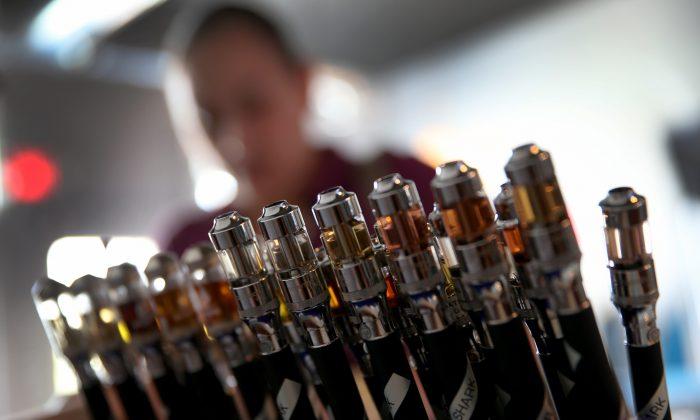E-cigarette use has started to surge in the United States, including a dramatic rise in vaping among youth.
According to the Centers for Disease Control and Prevention (CDC), 4.5 percent of high schoolers used electronic cigarettes in 2013, but that rose to 13.4 percent in 2014, meaning vaping has now surpassed cigarette smoking among youth.
The issue is that many companies market e-cigarettes heavily to teenagers. While the gadget does not contain tobacco, it still contains high levels of nicotine and other potentially harmful chemicals. Not all the chemicals are known, because there is still no government oversight of vaping products.
Nicotine itself is an addictive drug, which the CDC warns can harm the developing adolescent brain. Vaping also may make teens more likely to smoke tobacco in the future.
With flavors like bubblegum and cotton candy, it is clear which demographic e-cig companies are targeting.
In 2014, about 2.4 million middle and high school students were current users of electronic cigarettes, according to the CDC.
E-cigarettes are battery-powered devices that heat or vaporize a nicotine-containing liquid, which is inhaled. They’re usually promoted as an alternative to smoking a tobacco cigarette.
There is a strong correlation between the rise in e-cigarette use and youth being exposed to ads, according to a new CDC report. More than 18 million middle and high school youth, or 7 in 10 students, were exposed to e-cigarette ads in 2014, says the report.

The result shouldn’t be surprising given how much e-cig companies have increased advertising spending. Advertising budgets rose from $6.4 million in 2011 to $115 million in 2014.
The primary places where youth are exposed to ads are at retail and convenience stores, followed by the Internet, movies and TV, and lastly magazines and newspapers.
In the United States, retail sales of e-cigs totaled about $795 million in 2014, with convenience store sales being the most popular, accounting for 81 percent of all sales.
Compared to regular tobacco cigarettes, e-cigs are much cheaper, which could be another reason for their popularity, especially among students. Wal-Mart sells a brand of e-cigs starting from as little as $6 for a pack of 10 cartridge refills.
The appearance of e-cigs on-screen with celebrities shown vaping has likewise contributed to the rise. For example in the 2010 film “The Tourist,” actor Johnny Depp is seen vaping in a nonsmoking area.
Regulations Needed
Research on the health effects from e-cigs is still extremely limited, with manufacturers still not required to disclose the full list of chemical ingredients.In terms of short-term effects, in 2015, there were 3,067 reported cases of skin exposure and liquid nicotine poisoning from e-cigs, according to the American Association of Poison Control Centers (AAPCC).
The number of cases increased significantly from previous years—in 2011, there were just 271 cases reported to AAPCC.
Last April, 31 medical and health groups wrote a letter to President Obama asking for the government to push through regulations on e-cigs. The groups included the American Academy of Pediatrics, Campaign for Tobacco-Free Kids, American Heart Association, and the Society for Research on Nicotine and Tobacco.
“[Federal and Drug Administration] has no authority to stop manufacturers from using candy and fruit flavors in these tobacco products, and they cannot require manufacturers to disclose their ingredients or even require them to use childproof packaging for liquid nicotine containers,” the letter reads. “The unnecessary delay in regulating these products has put children at risk.”
The letter said marketing tactics from e-cig companies directly entice young people and are irresponsible.
“It’s no wonder use of e-cigarettes by youth has skyrocketed. This process has already taken far too long. We cannot afford more delays that allow tobacco companies to target our kids with a new generation of tobacco products,” the letter says.






Friends Read Free